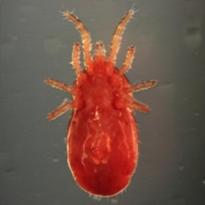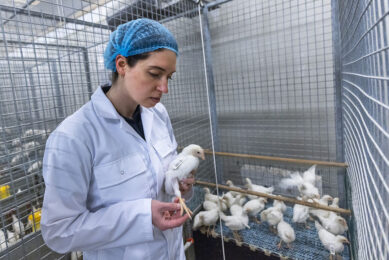Red mites: potential source of salmonella in poultry houses

Red mites are difficult to eradicate as they shelter in cracks and crevices in poultry houses. These mites are also a potential source of salmonella transmission, say biosecurity experts at agriculture specialists Kiotechagil.
“While it is well known that mites can transmit diseases such as fowl cholera, fowl typhoid and the chicken pox virus; the fact that they feed by sucking blood means they can also theoretically transmit salmonella through contaminated blood,†explained Kiotechagil’s Mike Rogers.
Both the red mite and the northern fowl mites have long been regarded as being one of the most common and critical problems for poultry farmers. They move quickly over a bird’s skin and feathers and their blood sucking activity can crucially cause a drop in egg production as well as anaemia and in the case of severe infestation, death, says Kiotechagil.
While red mites feed on the birds in darkness often for about 1-2 hours each night before retreating to the extremities of the poultry house, the northern fowl mite breeds continually on the bird. It is therefore a particular problem for caged birds.
“Because red mites can live away from birds for up to six months they are frequently extremely difficult to get rid of,†says Rogers. In addition, the largely mild winters of the last few years has enabled the mites to survive and thrive.â€













